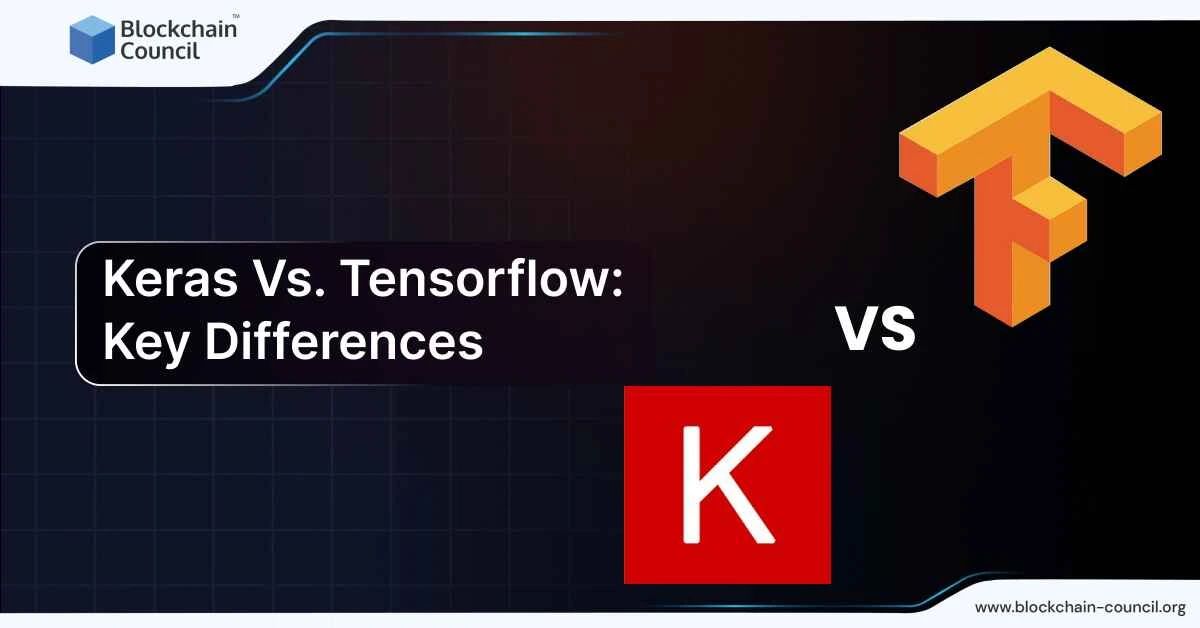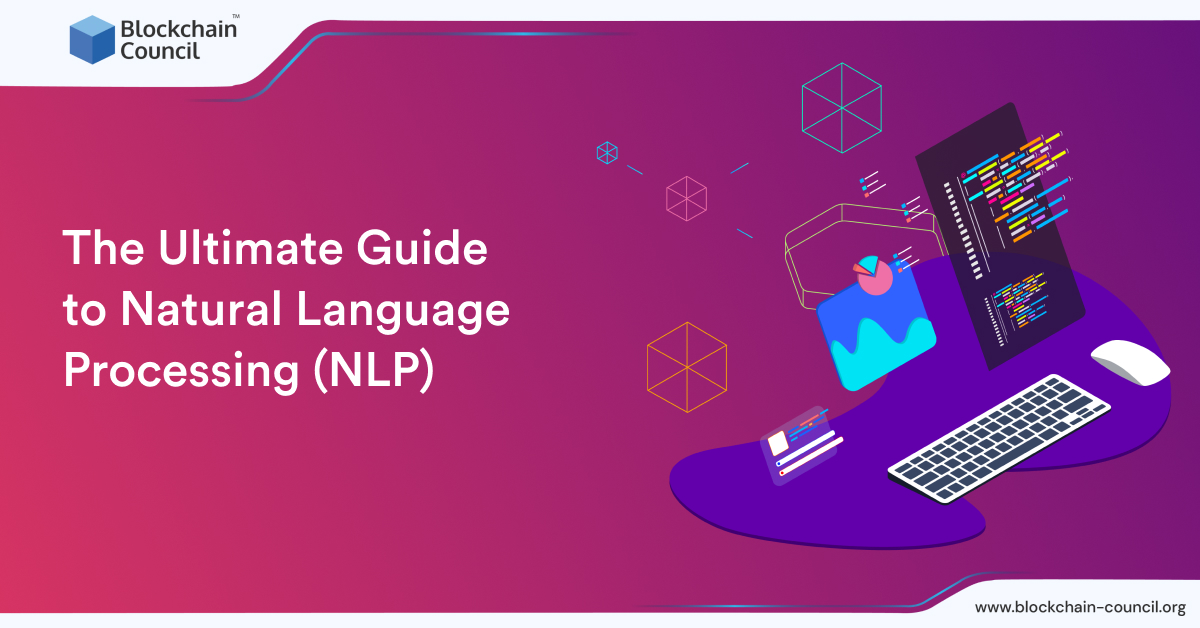
- Blockchain Council
- September 25, 2024
Keras and TensorFlow are essential tools for building deep learning models. While TensorFlow is a comprehensive end-to-end platform for machine learning, Keras serves as a high-level interface that simplifies the complexities of working directly with deep learning. Keras is integrated within TensorFlow as of version 2.0, but it can also be used with other backends like Theano and CNTK, making it versatile and beginner-friendly.
Understanding their differences can help you choose the right tool based on your project’s requirements, especially if you’re new to the field.
What is TensorFlow?
TensorFlow is, without a doubt, one of the most powerful deep learning frameworks we have today. It gives you both low-level and high-level APIs, so you can choose the level of control you need. And with TensorFlow, you’re working with computational graphs that map out every step of the process—nodes, functions, data flows—it’s all there. This makes TensorFlow ideal for large-scale applications and complex models.
But let’s be real—TensorFlow isn’t just for your average, everyday tasks. This is the tool for big projects, for advanced research, and for people who need to get into the weeds of deep learning. If you’re developing applications in computer vision, natural language processing, or reinforcement learning, TensorFlow is a great choice. And with tools like TensorFlow Lite and TensorFlow Serving, you can deploy these models on any platform, from mobile devices to embedded systems. That’s the kind of flexibility that’s making a big impact.
However, TensorFlow’s strength also means it comes with a steeper learning curve. It’s complex. It’s detailed. And it’s going to challenge you to dive deep into programming and deep learning concepts. But for those who need that level of control, it’s an amazing tool.
What is Keras?
Now, let’s talk about Keras. Developed by François Chollet, Keras is designed with one thing in mind: making deep learning accessible. It’s got this user-friendly interface that abstracts away the complexities, so you can build models quickly without getting bogged down in the technical details. This is what makes Keras so special—it’s approachable, and it’s empowering so many people to get involved in deep learning.
Keras provides all the components you need—layers, optimizers, activation functions—and it’s all about getting you up and running quickly. Whether you’re using sequential models or working with more complex architectures, Keras has the tools you need. It’s perfect for smaller projects, for research, and for those moments when you need to test an idea quickly.
Of course, Keras’s simplicity means it doesn’t have all the fine-grained control you get with TensorFlow. So, if you’re looking to customize every aspect of your model, you might find some limitations. But for many developers, Keras strikes the right balance between simplicity and functionality.
Key Differences Between Keras and TensorFlow
Ease of Use:
- Keras: It’s known for its ease of use. You can create models with just a few lines of code, and that’s why it’s great for beginners or for rapid prototyping.
- TensorFlow: Offers incredible control, but it’s more complex. You need a deeper understanding, and that can make it a little harder to get started.
Level of Control:
- Keras: Provides enough control for most tasks, but it’s not built for the highly customized operations you might need in advanced research.
- TensorFlow: Gives you full control over your models, and that’s why it’s preferred when customization and optimization are key.
Performance and Scalability:
- Keras: Great for smaller datasets and quick development. It’s fast, but it’s not optimized for massive datasets or highly specialized performance tweaks.
- TensorFlow: Built to handle big data, complex computations, and large-scale projects. It’s scalable, and it’s designed for those who need to push boundaries.
Backend Flexibility:
- Keras: Works with multiple backends like TensorFlow, Theano, and CNTK, giving you options depending on your needs.
- TensorFlow: It’s its own backend, and while it can run Keras models, it doesn’t natively support others.
Debugging and Visualization:
- Keras: Simple architecture, clear error messages—makes it easier for beginners to figure out what’s going on.
- TensorFlow: Has advanced tools like TensorBoard and tfdbg for deep visualizations, but they come with their own complexities.
Community and Support:
- Keras: A supportive community, but it’s not quite as expansive as what you’ll find with TensorFlow.
- TensorFlow: Backed by Google, with a huge community and vast resources. If you’re looking for comprehensive support, this is it.
When to Use Keras?
Keras is fantastic when you need speed and simplicity. If you’re a beginner, an educator, or just someone who wants to experiment quickly, Keras is the way to go. It’s great for:
- Rapid prototyping and testing new ideas.
- Small to medium-scale projects.
- Learning and teaching deep learning.
- Collaborative work where clear and simple code matters.
When to Use TensorFlow?
TensorFlow shines in scenarios where you need advanced control, detailed optimization, or large-scale deployment. It’s perfect for researchers and engineers building sophisticated models. Use TensorFlow for:
- Big, complex projects with huge datasets.
- Research and development that demands low-level control.
- Deploying models across multiple platforms.
Conclusion
Choosing between Keras and TensorFlow depends on your needs and your level of expertise. Keras brings ease and speed, making it ideal for getting started or quickly testing ideas. TensorFlow, with its advanced capabilities and scalability, is suited for more complex, large-scale projects. Both are valuable in their own right, and understanding their strengths will guide you in picking the right tool for your work.





































































 Guides
Guides News
News Blockchain
Blockchain Cryptocurrency
& Digital Assets
Cryptocurrency
& Digital Assets Web3
Web3 Metaverse & NFTs
Metaverse & NFTs
